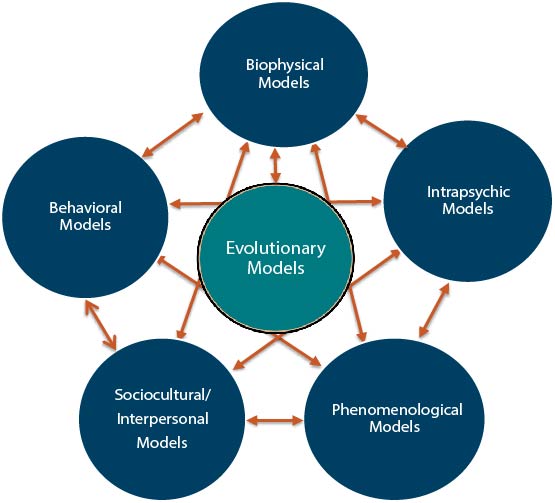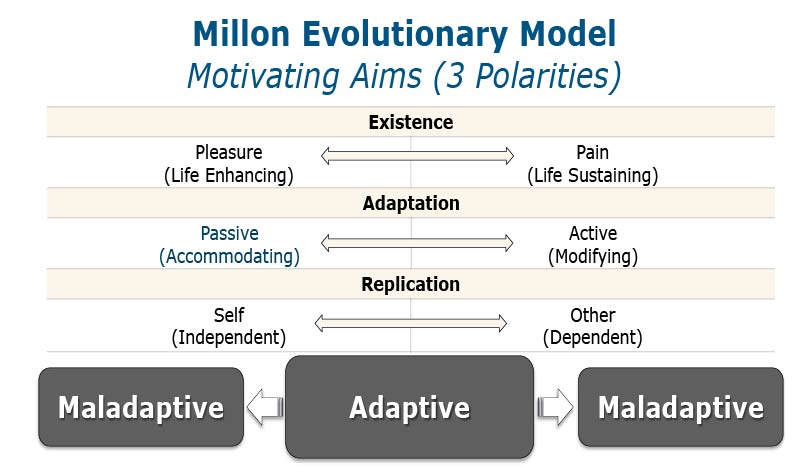
Core Components
Why Use Evolutionary Theory To Describe Personality?
Elements of evolutionary theory were introduced by Millon in a 1990 book owing to his belief that its essential principles operate in all aspects of nature and scientific endeavor, from cosmogony, at one end, to human interactions, at the other. Read More

Basic Human Motivation Across Three Polarities

Existence: The Pleasure-Pain Polarity

Adaptation: The Active-Passive Polarity
Following assurance of existence, an organism/personality must be maintained through exchanges of energy and information with its environment. The second motivating aim relates to adaptation, which is also framed as a two-part polarity. On one end, there is a passive orientation, which is a tendency to accommodate to one’s environment, whatever it may be. On the other end is an active orientation, or a tendency to modify in one’s surrounds to make the environment more suitable to the personality or organism. Evidence of this aim is found in people “going along with the crowd,” for example, versus “getting what is deserved,” though, like with existence and the next aim, there are many variants.

Replication: The Self-Other Polarity

